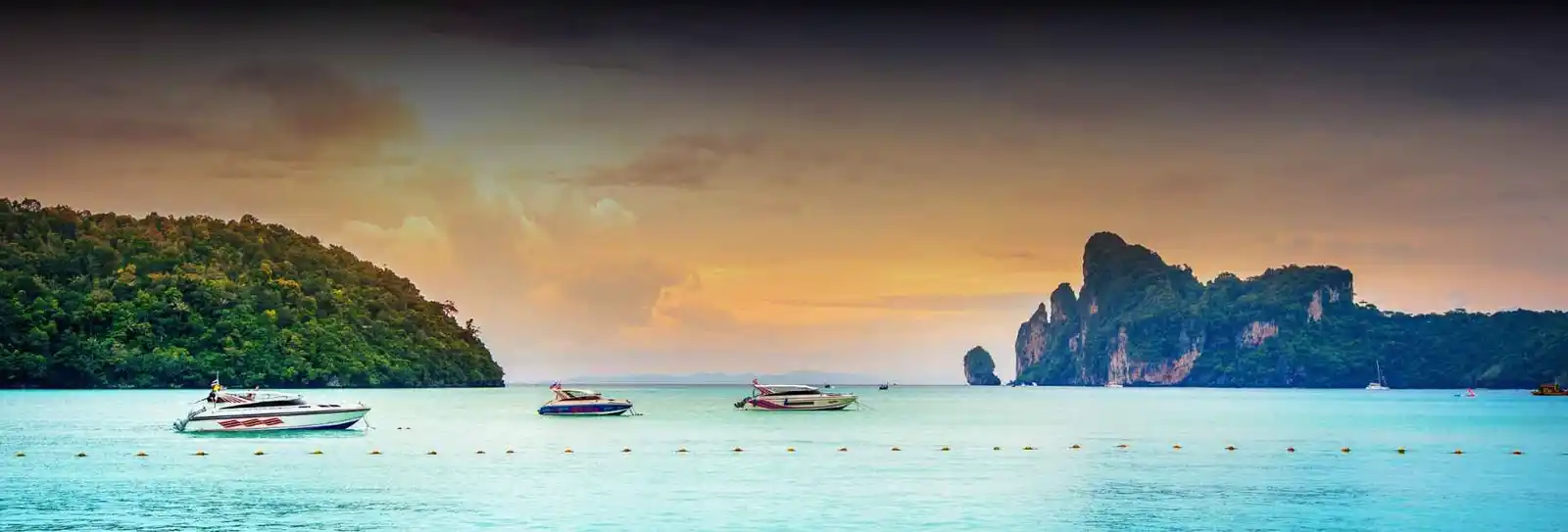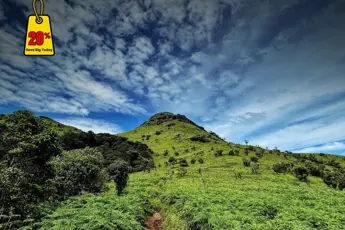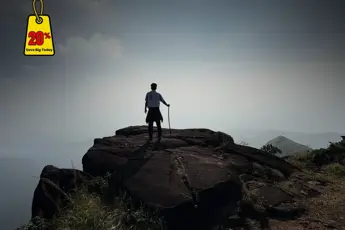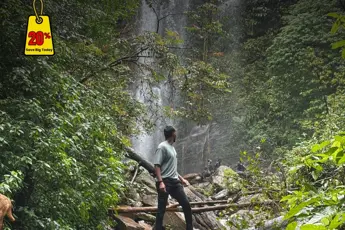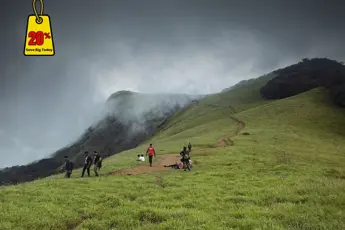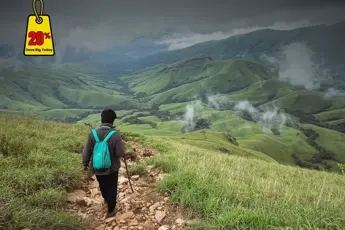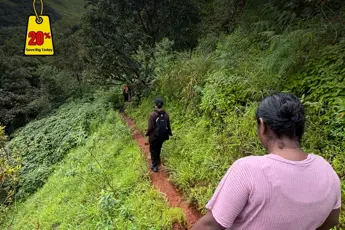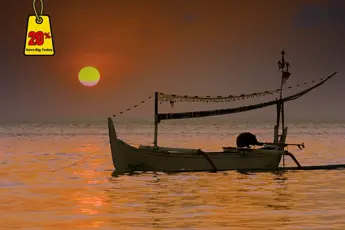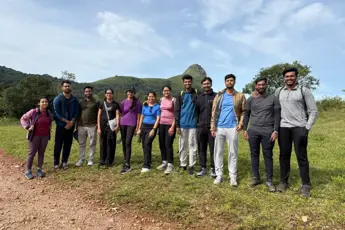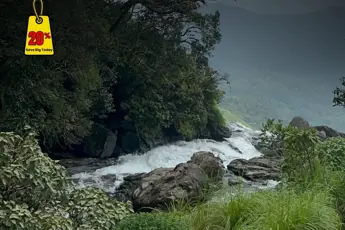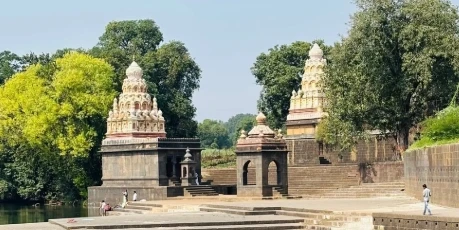
Maharashtra is a western coastal state of India. It's India's most diversified state. In its west, its state lies, and otherwise it's India's second most populous and second largest state and third largest too. It has its capital in Mumbai, commonly also known as the financial capital of India, and one of India's more populous cities, highly famous for being the hub for Bollywood, colonial architecture, sea drive, and the Gateway of India. Apart from Mumbai, Maharashtra offers the entire spectrum of experience, ranging from fantasy landscape hill retreats such as Lonavala, Mahabaleshwar, and Matheran to fascinating historical forts at Raigad, Pratapgad, and Sinhagad, conveying the story of Maratha heroism and history, the best among them being Chhatrapati Shivaji Maharaj. The state is blessed with its home of history and ancient Ajanta and Ellora cave temples, UNESCO World Heritage Monuments, announcing India's Buddhist, Hindu, and Jain heritage.The region of the Deccan plateau has such charming cities as Pune, famous for its education campus and cultural centre, and Nashik, a sacred city and Indian wine capital. Maharashtra is blessed with such picturesque beaches as Alibaug, Ganpatipule, and Tarkarli beaches, which are the most suitable sites for leisure and adventure. Maharashtra's cuisine mirrors its geography its spicy Kolhapur cuisine to the street food of Mumbai in the form of pav bhaji and vada pav. The patchwork diversity of Maharashtra's festive colours of Ganesh Chaturthi, Gudi Padwa, and Makar Sankranti reflects its traditional social fabric and customs. Regardless of your personality, weekend warrior, religious pilgrim, history buff, or adventure traveller, there's something for every kind of tourist in Maharashtra. Its natural scenery, historical sites, and cities render it an absolute must-visit place for visitors tasting India's multi-faceted offerings.2-day Trip to Maharashtra from Mumbai1. Lonavala & Khandala HillsLonavala and Khandala are twin hill stations of the Maharashtra Western Ghats, about 3 km apart. Both are renowned for their green forest valleys, foggy hills, and waterfalls. Both of them are weekend destinations for Mumbaikars and Punekars as well as for nature lovers and trekkers alike. Their hospitable climate, natural landscape, and colonial terrain endow them with the potential to be discovered in monsoons and weekends as a weekend tourism destination. Both the hill stations are popularly famous for chikki (Indian sweet) and natural forts and caves.History of Lonavala & Khandala HillsBoth Lonavala and Khandala share their history totally connected with the Maratha Empire and then the British Raj. They were ruled by Yadava dynasty and then the Mughals. Both these hill stations were very strategic military camps of the Marathas in the 18th century and had several forts like Lohagad and Rajmachi encircling them. The British built these places as hill stations in the 19th century to flee the summer heat of the plains and established railways and roads that brought tourism and trade.Places to Visit Around Lonavala & Khandala HillsBhushi Dam – The most popular tourist destination during the monsoon season because of its full water and scenic location.Tiger's Leap – A cliff-seat with a steep drop and a view of the valley.Rajmachi Fort – Historical fort, trekking, and camp location.Lohagad Fort – A Hill fort with a fortified building providing historical information and a scenic view.Karla and Bhaja Caves – Ancient Buddhist 2nd-century BC rock-cut caves.Pavana Lake – A Peaceful location which is perfect for camping and star-gazing.Della Adventure Park – A Theme park for adventure, providing varied adventure activities.How to Reach Lonavala & Khandala HillsBy Road: Lonavala and Khandala are well-linked by the Mumbai-Pune Expressway. It's approximately 83 km from Mumbai and 65 km from Pune by road or car.By Train: Both towns are served by Lonavala Railway Station, with regular trains from Mumbai and Pune.By Airport: The nearest airport is Pune International Airport, around 70 km away. Mumbai’s Chhatrapati Shivaji Maharaj International Airport is about 90 km away.Best Time to Visit Lonavala & KhandalaMonsoon Season (June to September): Hilly greens. Streams and waterfalls are in full bloom.Post-Monsoon to Winter (October to February): Soft and pleasant weather. Ideal for trekking, sightseeing, and outdoor games. The least rainfall, thus easy travelling.Summer (March to May): Not so hot, but very hot like in cities. Ideal for a short weekend. Not so crowded, thus peaceful and quiet.2. Karla CavesKarla Caves are a group of ancient Buddhist rock-cut caves near Lonavala in Maharashtra, which date back to the 2nd century BCE. The rock-cut caves into the hillside are extremely lovely early Indian rock-cut architecture and Buddhist art. The main attraction is the lovely chaitya (prayer hall), one of the oldest and best-preserved in India, with lovely carvings and a huge stupa in the centre.History of Karla CavesKarla Caves were constructed by Buddhist benefactors and monks, including wealthy merchants and kings, over a time of many centuries. Caves are the leftovers of Buddhism's Hinayana era and hold inscriptions of the dynasty of the rulers of the Satavahana dynasty. Great Chaitya, the biggest of all the caves, was completed in 120 CE and is renowned because of the 2,000-year-old wooden beam ceiling. Caves were stopovers and sites of worship for travelling merchants and monks along the ancient trade routes.Points of Interest: Karla CavesGreat Chaitya Hall – Great hall with stupa, pillars, and wooden supports of a traditional roof.Sculptures & Carvings – Lovely elephant, god, and motif carvings on doors and pillars.Ashokan Pillars – Ruins of ancient stone pillars of the era of Emperor Ashoka.Ekivira Temple – Temple of Goddess Ekvira, a short distance from cave entrances, is most popular among local devotees.How to get to Karla CavesBy Road: Approximately 10 km from Lonavala and can be accessed by taxi or auto-rickshaw with little inconvenience.By Train: Lonavala nearest railway station, well connected to Mumbai and Pune.Best time to visit Karla CavesOctober to March: Perfect weather, best time to visit the caves.Monsoon Season (June to Sept.): Hillside is in its prettiest greens, but the stair steps are slippery.Avoid Summer (April to May): Too hot and humid, so the trek is not comfortable.3. Bhaja CavesBhaja Caves consist of 22 rock-cut caves at Lonavala, Maharashtra, close to Karla Caves. They date back to the 2nd century BCE and are India's oldest cave temples from the age of Buddhism. The caves lie on the hill slope and have a scenic view of the surrounding valleys, which is historically as well as scenically significant.History of Bhaja CavesConstructed in the Hinayana period of Buddhism, Bhaja Caves were Buddhist monks' meditation rooms and monasteries. The caves were commissioned by the early Buddhist fraternity, most likely by the ruling authority and merchants, then, like the Satavahanas. There are inscriptions on the caves that are filled with information about ancient sacrifices and religious worship.Places Nearby of Bhaja CavesChaitya (Prayer Hall) – A horseshoe-shaped hall of a stupa typical of early Buddhist architecture.Viharas (Monastic Halls) – Dwellings and meditation chambers of the monks.Breathtaking Carvings – Exhibits distinctive chariot reliefs and dancing human beings, a glimpse which reminds one of ancient Indian art and mythology.Waterfall Nearby – A monsoon waterfall close by contributes to the natural charm, especially during monsoons.How to Reach Bhaja CavesBy Road: Approximately 12 km from Lonavala and close to Malavli village.By Train: The closest railway station is Malavli, a 2 km trek to the caves along the route of Pune–Lonavala–Mumbai.On Foot: Steep but concentrated trek from the bottom (around 20–25 minutes).Best Time to VisitMonsoon (June–September) – Nature at full verdure and waterfalls all around spread an aura of magic.Winter (October–February) – Climatically, the best time to trek and see.Shun Summer (April to May) – The climb is exhausting under the sun.4. Bhushi DamBhushi Dam is the favourite haunt of the Lonavala tourists, Maharashtra. Constructed on the Indrayani River, it's a masonry dam which becomes famous in monsoon when it is filled with rock steps cascades. Set amidst green scenery and hills in between, the dam is a picnic spot and the best getaway to relax and enjoy nature.History of Bhushi DamBhushi Dam was constructed in the late 1860s by the Indian Railways to provide water to steam engines. Its role also shifted, and it became a recreation and tourist destination. It is not a heritage structure, but is also culturally and historically significant due to its history and its relationship with the developmental history of the Lonavala area.Places around Bhushi DamSteps of Water Overflow – During monsoon time, has water overflow in enormous steps so that visitors can sit and play on the stream.Panorama – Nature enthusiasts will appreciate the fact that the site is surrounded by forest and green hills.Picnic Area – Relatives and friends visit and relax at this site, particularly on weekends.Street Food and Local Food around – Street food and local food around are available in nearby small food shops.How to Reach Bhushi DamBy Car: It is 6 km away from Lonavala town and can be accessed by car, taxi, or auto-rickshaw.By Rail: The closest railway station is Lonavala Railway Station, 15 minutes from the dam.On Cycle or Foot: Pedestrians and cyclists prefer to move on foot or cycle from Lonavala because the trails are well-maintained.Best Time to Visit Bhushi DamPost-Monsoon (Oct to Nov): Highest water level, but not the population.Monsoon Season (June to Sept): The Dam is best with water overtopping and greenery everywhere.Avoid Summer (March to May): The Sea withdraws, and the location is arid and littered.5. Tiger's Point (Sunset Point)Tiger's Point, or Tiger's Leap, or Sunset Point, is one of the most sought-after vantage points of Khandala in Maharashtra. At a height of around 650 meters from sea level, this cliff top point offers an extended long-range bird's view of the verdant Western Ghats, valleys, and waterfalls, especially during monsoon. The cliff edge has been given the title "Tiger's Leap", by which, according to local mythology, is represented as a tiger leaping into the valley.History of Tiger's Point (Sunset Point)Tiger's Point itself is not signposted for any history, but its name will inevitably become synonymous with its tiger-figured nose from afar, a feature of much of the natural terrain there. Khandala and the surrounding hills have been of crucial importance to the history of Maharashtra, particularly in Maratha Empire times, when it was used as defensive fortifications and as military camps. Khandala, as a place, has always been a favourite among British officers, so the place itself, as an extra spur as a hill station, is a bonus.Places to See in and around Tiger's Point (Sunset Point)Duke's Nose – A popular cliff-top summit that has been dedicated in memory of the Duke of Wellington, and for a demanding trek and vistas.Rajmachi Fort – Trekkers' and scenery's vintage fort, very à la mode among adventure travellers.Lohagad Fort – An Ancient fort close to Khandala, ideal for trekkers and history buffs, with great views around.Bhushi Dam – A traveller’s attraction, especially during monsoon when water spills over the dam steps.Karla Caves – Ancient rock-cut Buddhist caves close to Lonavala, famous for their history and architectural beauty.Pavana Lake – A Serene lake with boating and camp facilities, with warm vistas of nearby forts.How to Reach Tiger's PointBy Road: Around 12 km from Lonavala and 6 km from Khandala; can be approached by local cabs or private vehicles.By Train: Lonavala and Khandala are the nearest stations, then drive a few kilometres.On Foot or by Cycle: Few tourists prefer cycling on a cycle or walking to the destination.Best Time to VisitWinter (October to February) – Salubrious, comfortable climatic conditions for tourism and photography.Monsoon (June to September) – Scenic green landscapes, mist, and waterfalls, the most romantic time to visit.Evening Hours – Optimum time to capture a breathtaking sunset with fewer crowds during weekdays.6. Visapur FortVisapur Fort is a strong hill fort just near Lonavala in the state of Maharashtra at an altitude of approximately 1,084 meters (3,556 feet). It is situated next to the more famous Lohagad Fort, but is of a larger area and provides the same panoramic views of hills and valleys on all sides. Famous for its scenic trekking route, monsoon greens, and ancient stones, Visapur is an acrophobic's, nature enthusiasts, and history enthusiasts.History of Visapur FortBalaji Vishwanath, the initial Peshwa of the Maratha Empire, constructed Visapur Fort in the early 18th century. It was a strategic one because it is on higher ground and has a wide panoramic view of the surrounding region. Visapur was taken by the British in 1818 with a British expedition against the Marathas and employed its favourable location to attack neighbouring Lohagad Fort. When it was captured, most of the fort was razed to the ground so that Maratha troops would not be able to recapture it.Places near Visapur FortBhaje Caves: These are Buddhist rock-cut caves and date back to the 2nd century BCE. They contain beautiful carvings such as a huge chaitya hall and some viharas. These caves are a great historical site for those interested in learning about ancient Buddhist architecture.Karla Caves: A group of 16 2nd-century BCE rock-cut caves. The Karla Caves are the oldest and important Buddhist Indian caves, and the main attraction is the massive Chaitya Hall and charming carvings.Pawna Lake: A peaceful lake spot just outside Lonavala, perfect for camping, picnicking, and exploring nature. Framed by rolling hills, the lake itself is a peaceful oasis from the crazy city life. Perfect for a peaceful boat ride or lake camping.Tungarli Lake: A serene reservoir that is a drive distance from Lonavala, bordered by hills and forest cover. It is a serene getaway for nature walks, birdwatching, and photography. Far more off the beaten track than anywhere else, it is a serene retreat.Tung Fort: The small fort with a relatively more isolated trekking experience. The trek to Tung Fort offers a bird's-eye view of the place, ranging from Pawna Lake to hillocks. The countryside and the ruins of the fort offer a good destination for history lovers and adventure sports lovers.How to Reach Visapur FortRoad: 15 km from Lonavala. Take a taxi or drive to Malavli village and trek.Train: The Nearest railway station, Malavli, is 2 km away from the base.Walking: From Malavli railway station to the base village on the trek for 45 minutes.Best Time to Visit Visapur FortMonsoon (June to September) – A Green heaven is formed by the Fort with water streams flowing and misty scenery.Post-Monsoon (October to February) – Clear skies and cold weather best time for roaming around and photography.Shun Summer (March to May) – Uncomfortable, hot, dry conditions.7. Pawna LakePawna Lake, 15 km from Lonavala and 10 km from Khandala, is a man-made lake formed by Pawna Dam over Pawna River. It is a weekend getaway of choice for nature enthusiasts, adventure enthusiasts, and anyone in search of peaceful tranquillity. It is edged by rolling hills and valleys of emerald greens in the morning and evening, and is just heavenly. It is a great camp, with boating and activity points.History of Pawna LakePawna Lake was created due to the construction of Pawna Dam, which was built for water supply for irrigation. It has, however, turned out to be one of the finest locations in years, with people visiting it due to its environment and adventure. The environment around the lake is said to be peaceful and highly endowed with biodiversity levels, thus turning out to be a perfect outdoor recreation location.Attractions Around Pawna LakeLohagad Fort – Approximately 12 km from the lake, trekking and sightseeing.Tikona Fort – Adventure sport enthusiasts’ paradise, approximately 10 km from the location, with wonderful views of the area.Rajmachi Fort – Approximately 25 km from Pawna Lake, Rajmachi is famous for treks as well as history.Bhaja Caves and Karla Caves – The ancient Buddhist caves at 10–15 km from Pawna Lake, are there for history lovers to discover.How to Reach Pawna LakeBy Road: It is just 15 km from Lonavala and 10 km from Khandala. The lake is accessible directly from the lake in a private cab or car.By Train: Nearest stations are Lonavala and Khandala, well connected to Mumbai and Pune. Taxi or auto-rickshaw facilities can be availed from the railway stations to the lake.By Bike: Pawna Lake Bike tour is an experience of a lifetime with the hilly and valleyous terrain all along around providing such beautiful views on the way.How to Reach Pawna LakeMonsoon (Jun to Sep) – Lake is water-full and water-burdened, and fairy-like.weekendWinter (Oct to Feb) – The Weather is pleasant, and hence ideal for boating, picnicking, and camping. Tourist season.Summer (Mar to May) – Though extremely hot, pleasant nights, a good choice for a weekend excursion, but the lakes can be low.Why Book with escape2exploreWhen exploring Treks in Maharashtra and beyond, escape2explore stands out as a trusted name in adventure and experiential travel. Here’s why hundreds of travellers choose us for their getaways:Trusted, Well-Reviewed Local Operator: escape2explore has gained the trust of thousands of content tourists all over India. With persistent positive feedback and an unblemished reputation for delivering quality experiences, we assure you that your experience will be hassle-free, memorable, and value-packed. Our insider local knowledge guarantees that you will always be in safe hands.Seasoned Guides: Our trips are led by friendly, trained, and professional guides who are passionate about the outdoors and your safety. Whether it's a beach trek, a cultural tour, or a spiritual walk through temples, our team knows the terrain, the stories, and how to make each moment count.Safe & Curated Itineraries: Your safety is our number one priority. Our tour packages are thoughtfully crafted with safety measures, researched accommodations, and easy travel arrangements. We take care of the details so you can have the experience hassle-free and worry-free.Unique Experience That You Won't Find Anywhere Else: With escape2explore, you discover more than the tourist attractions. We go off the beaten track with hidden beaches, unusual treks, offbeat cultural destinations, and true interactions.Read: Haristandragad|Korigad Fort|Visapur|Lohagad Fort|Ratangad Fort


